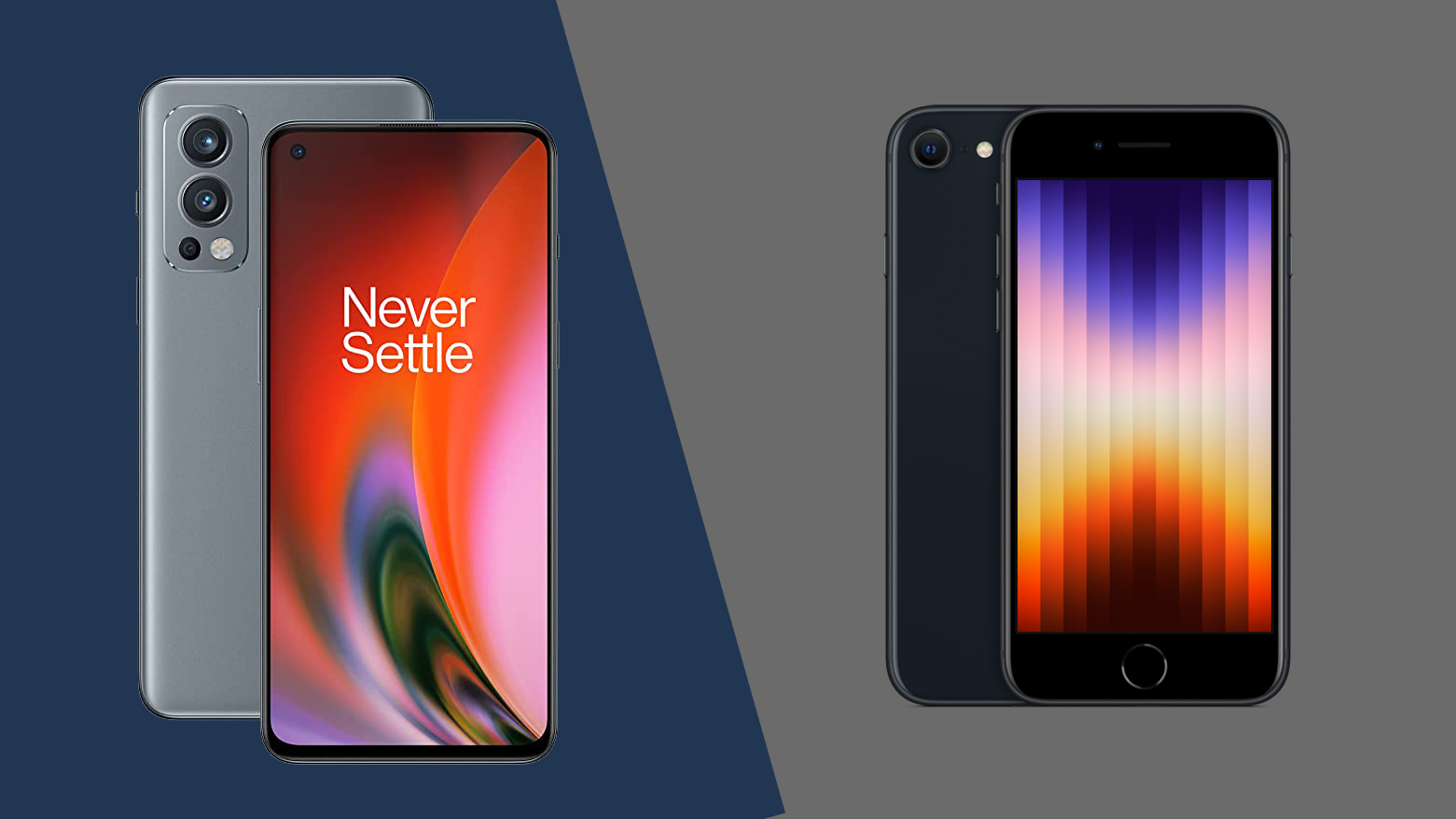
The iPhone SE (2022) and the OnePlus Nord 2 offer two of the best mid-range smartphone experiences available.
They’re similarly priced, and both offer the promise of flagship-level components for less than half the price you’d normally expect to pay.
What’s fascinating, though, is that they’ve gone about their business in very different ways. So which is the better buy?
Let’s look at the pros and cons.
iPhone SE (2022) vs OnePlus Nord 2: price and availability
Prices for the iPhone SE (2022) start at $429 / £419 / AU$719 for the 64GB model. The 128GB model costs $479 / £469 / AU$799, while the 256GB model costs $579 / £569 / AU$969. It hit shops on March 18, 2022.
At its launch on July 28, 2021, prices for the OnePlus Nord 2 started from £399 (about $499, AU$703) with 8GB of RAM and 128GB of storage. The 12GB of RAM and 256GB of storage model bumps that up to £469 (about $587, AU$826).
Towards the end of 2021, OnePlus launched the special edition OnePlus Nord 2, which is basically the top Nord 2 model with a Pac-Man themed design and software. This handset costs £499 (around $624, $AU874).
However, as that pricing suggests, the OnePlus Nord 2 isn’t available in the US or Australia. The iPhone SE (2022) might lose on pricing, but it wins on availability.
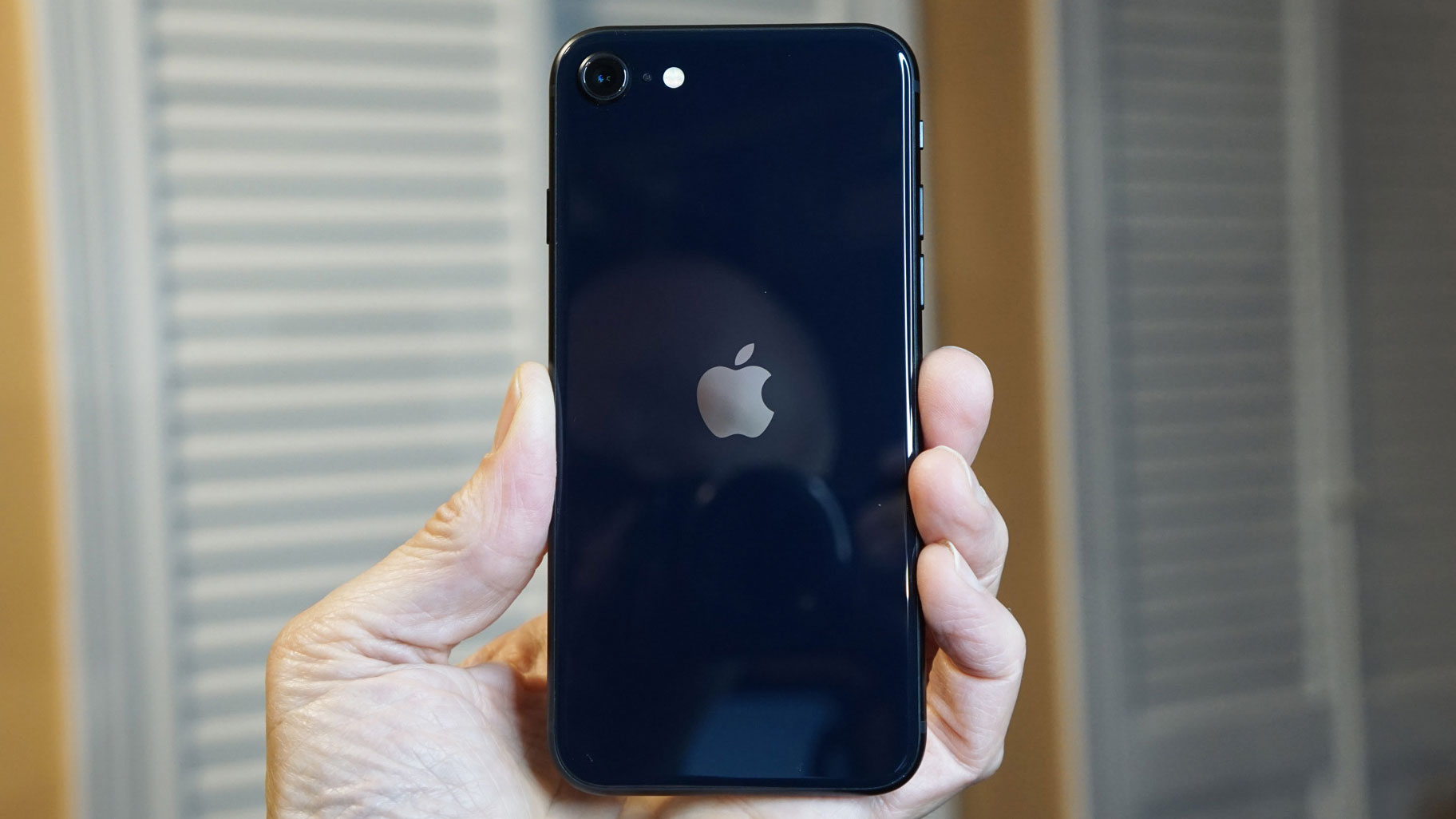
iPhone SE (2022) vs OnePlus Nord 2: design
The iPhone SE (2022) sports a very similar design to the iPhone SE (2020) before it. And that phone was basically an iPhone 8, which largely stuck to the template laid out by the iPhone 6.
All of which is to say that it isn’t a particularly modern or exciting design. That explains the presence of an anachronistically huge forehead and chin, the latter housing a Home button.
By comparison, the OnePlus Nord 2 sports the quintessential 2021/2022 smartphone design. We have a large front-filling display, minimal bezels, and a rounded glass rear.
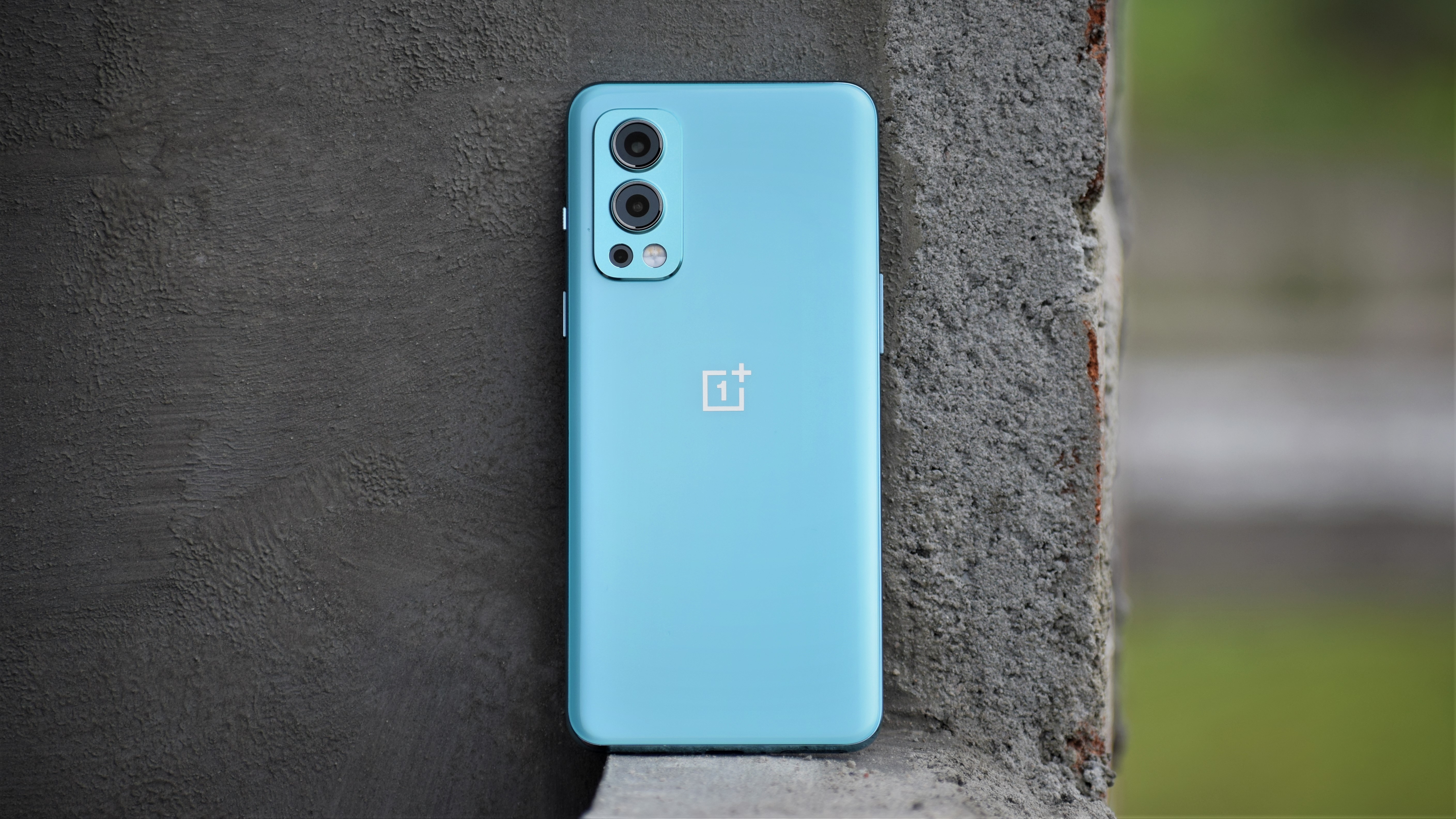
In place of the iPhone’s Touch ID system housed within that Home button, there’s an in-display alternative. The OnePlus approach is more of its time, but there’s no denying the speed or reliability of Apple’s system.
While the iPhone SE (2022) design is undeniably ancient, there’s something almost refreshing about that. It doesn’t look like any other phone on the market right now, whereas the OnePlus Nord 2 looks pretty generic.
Also in the iPhone SE (2022)’s favor – at least for some people – is its tiny dimensions. It measures just 138.4 x 67.3 x 7.3mm, and weighs a mere 144g. That’s far smaller than the OnePlus Nord 2, which comes in at 158.9 x 73.2 x 8.3mm and 189g.
Neither phone coats itself in glory on the water-proofing front, but at least the iPhone SE (2022) has an IP67 rating. The OnePlus Nord 2 doesn’t have anything.
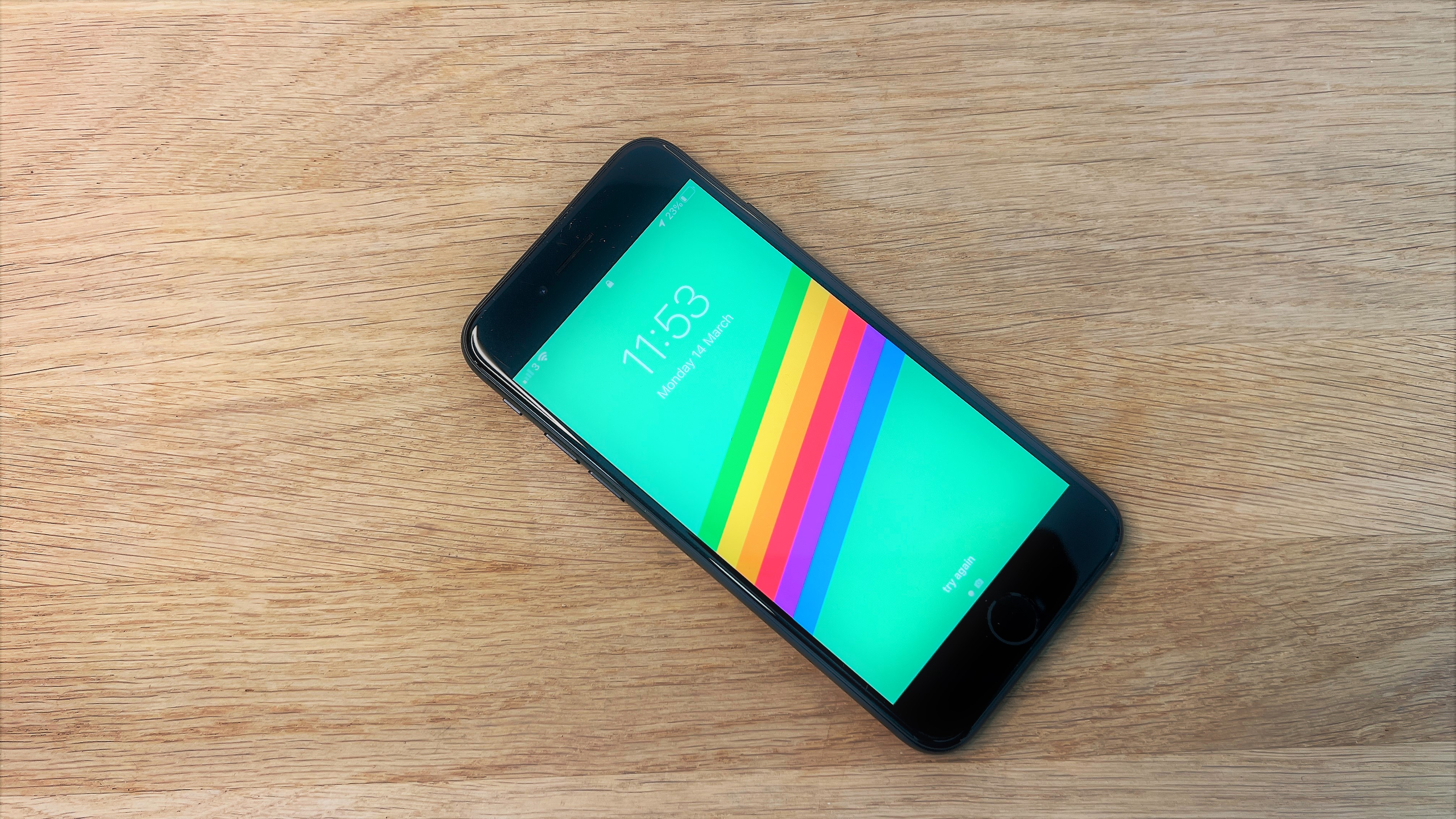
iPhone SE (2022) vs OnePlus Nord 2: display
The key issue with the iPhone SE (2022)’s tiny retro design is that it means a tiny retro display. It’s a deeply unimpressive 4.7-inch IPS LCD with a mere 750 x 1334 resolution.
Meanwhile, the refresh rate stands at a lowly 60Hz, and there’s a maximum brightness of 625 nits.
Conversely, the OnePlus Nord 2 comes with a 6.43-inch AMOLED display with a 1080 x 2400 resolution. You also get a 90Hz refresh rate. This is no flagship spec, but it’s much better than the iPhone screen in every way.
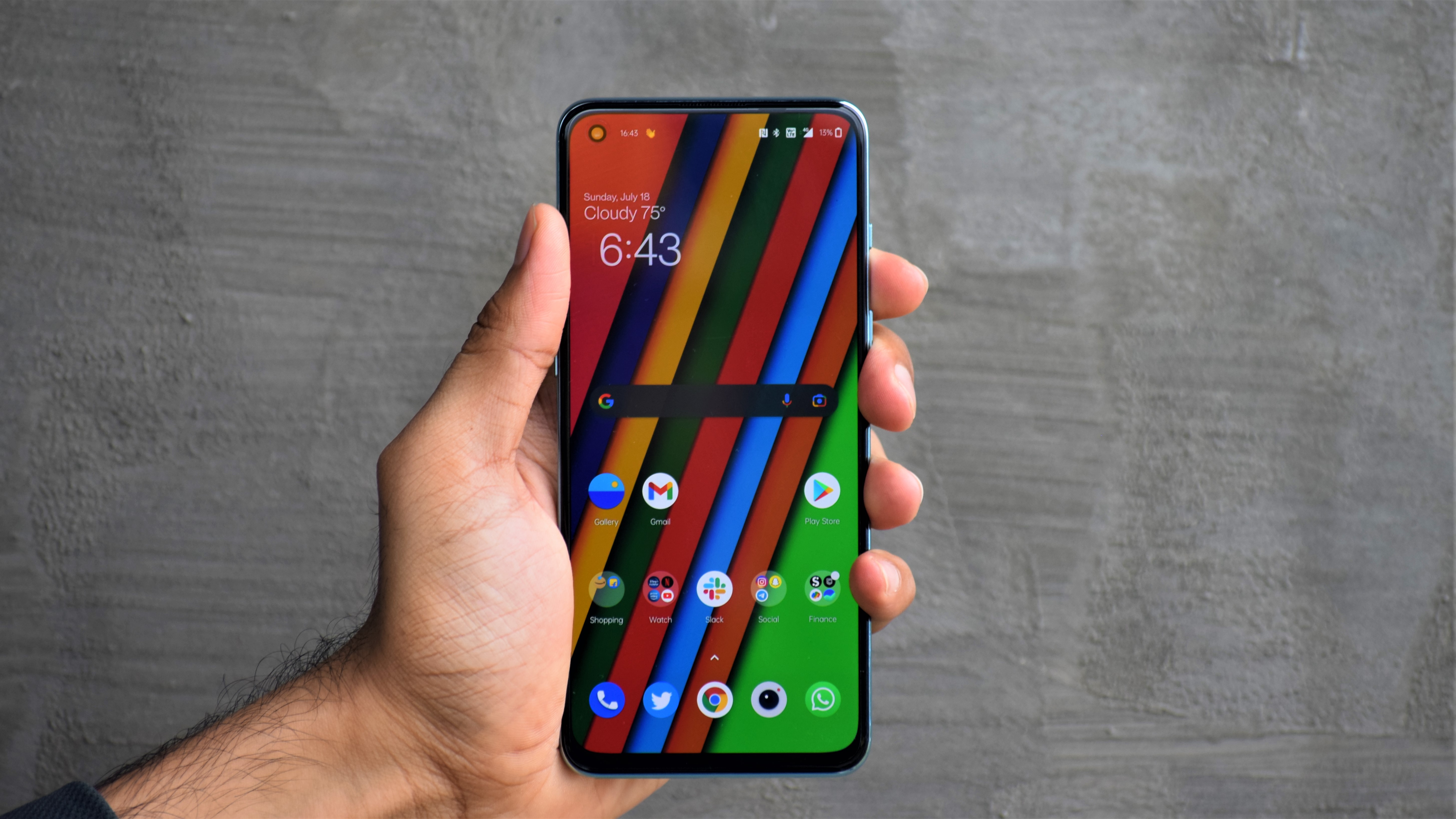
Neither screen particularly impresses, then, but the OnePlus Nord 2 still takes this round comfortably.
iPhone SE (2022) vs OnePlus Nord 2: camera
The iPhone SE (2022) comes with just a single 12-megapixel f/1.8 camera. Like the design and display, this component appears to come from a previous smartphone era – because it pretty much does.
From a hardware standpoint at least, the OnePlus Nord 2’s camera system is way ahead. It packs the same large 50-megapixel 1/1.56in sensor that made its way into a couple of flagship phones in 2021.
Also present is a dedicated 8-megapixel ultra-wide, as well as a 2-megapixel monochrome. It must be said that the latter sensor is more or less pointless.
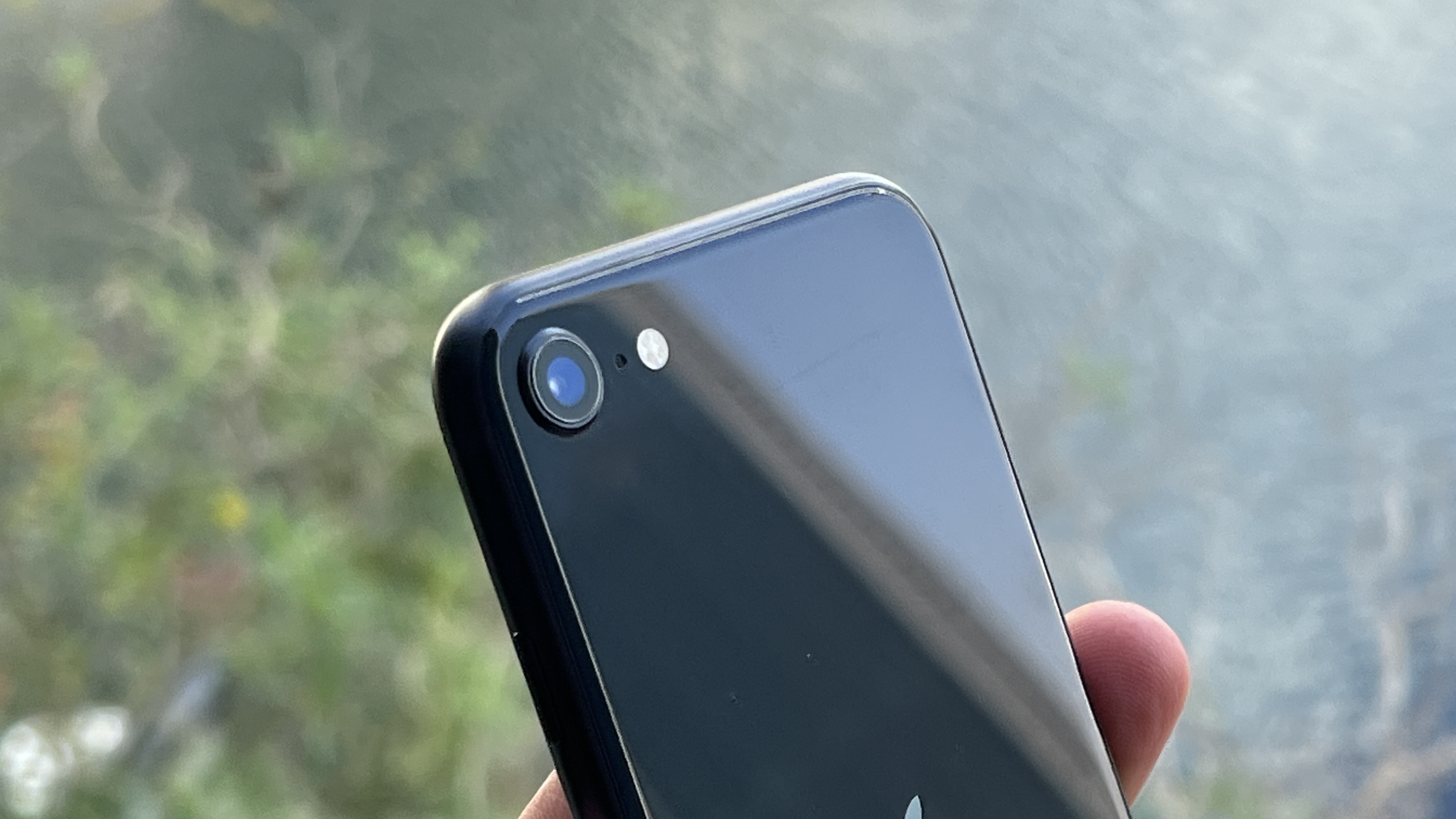
While OnePlus has the clear hardware advantage, Apple is known for its image processing smarts. Thanks to the latest A-series chip and Apple’s peerless algorithms, the iPhone SE (2022) is capable of taking shots that are “pleasing to the eye, color-accurate, and often beautiful”, according to our review.
You also benefit from Apple’s Smart HDR 4 and Deep Fusion technologies, and Apple remains the undisputed king of video capture right up to 4K at 60fps.
“Overall, the photo quality on this mid-range phone can still rival that of competitor’s handsets selling for almost twice as much,” our reviewer concluded.
Of course, the OnePlus Nord 2 camera is no slouch either. Our reviewer called it “a very capable main camera that not only shines in the daylight, but offers excellent performance in low-light with Night mode as well.”
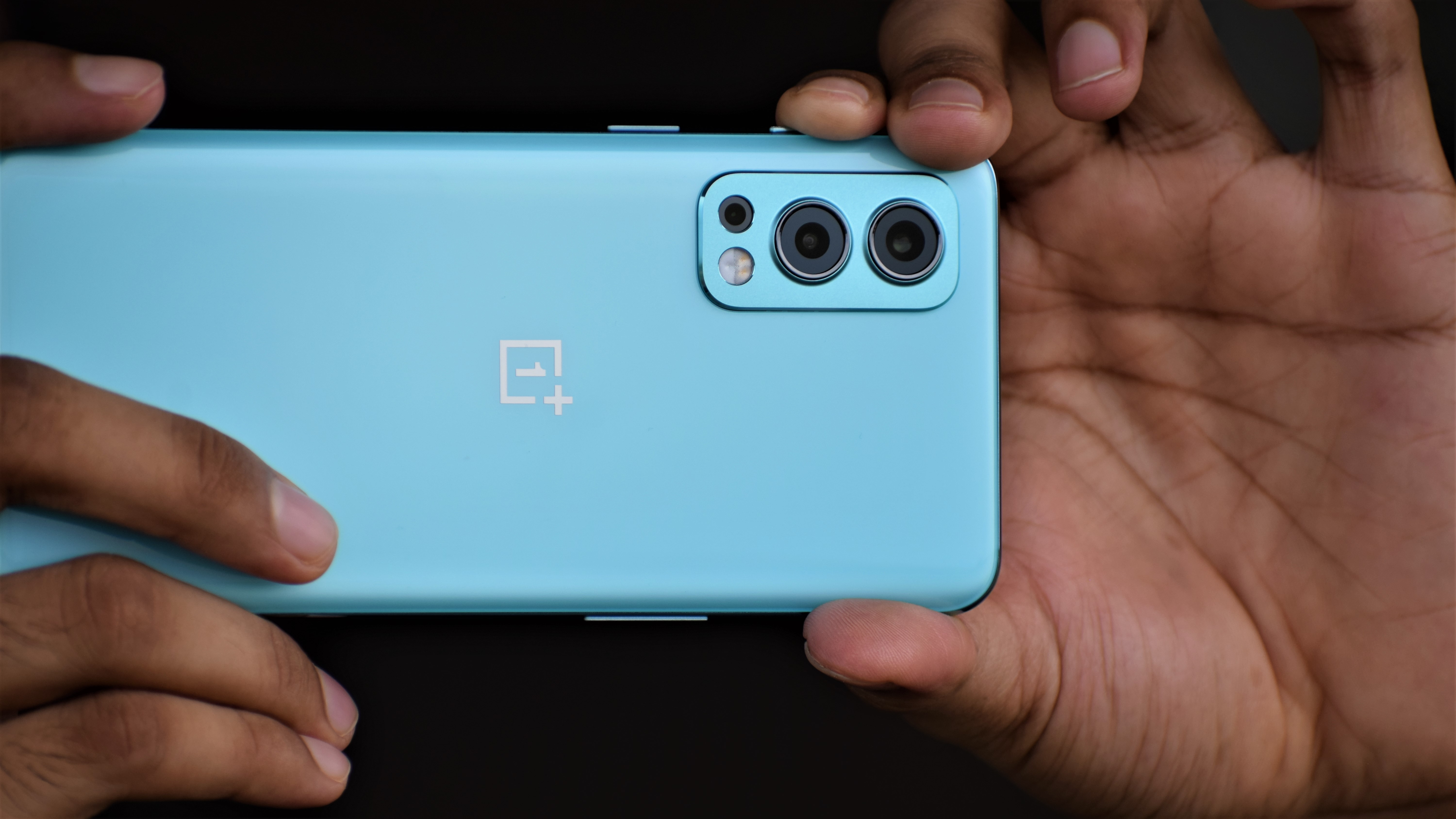
Saturation levels, dynamic range, and white balance are all strong, while HDR does an admirable job of balancing extremes of light and shade. In particular, Night mode shots are outstanding, with the kind of clarity we’d ordinarily expect to see in flagship phones.
While it doesn’t have a dedicated telephoto, all those main sensor pixels enable the capture of serviceable 2x and 5x digital zoom shots.
The 8-megapixel ultra-wide-angle camera does a decent job during the daytime, but less so at night. Still, at least it gives you the option of a new angle, unlike the iPhone.
iPhone SE (2022) vs OnePlus Nord 2: specs and performance
As we’ve just mentioned, the iPhone SE (2022) runs on Apple’s latest custom chip. That’s the same A15 Bionic processor that powers the flagship iPhone 13 Pro Max, no less.
While the OnePlus Nord 2 runs on the MediaTek Dimensity 1200-AI, which is impressive in its own right, this remains a mid-range chip. The Apple A15 Bionic simply blows it out of the water in every way.
We can’t fault the Nord 2’s performance, however. It’s a smooth operator in every-day running, and its benchmark tests beat most of its mid-range rivals. It’s even capable of running fast-paced 3D fare such as CoD Mobile on high settings, which is pretty impressive.
Naturally, with that chip and that low-res display, the iPhone SE (2022) can eat high-end games for dinner. This also means that it’s way more future-proof than the OnePlus Nord 2.
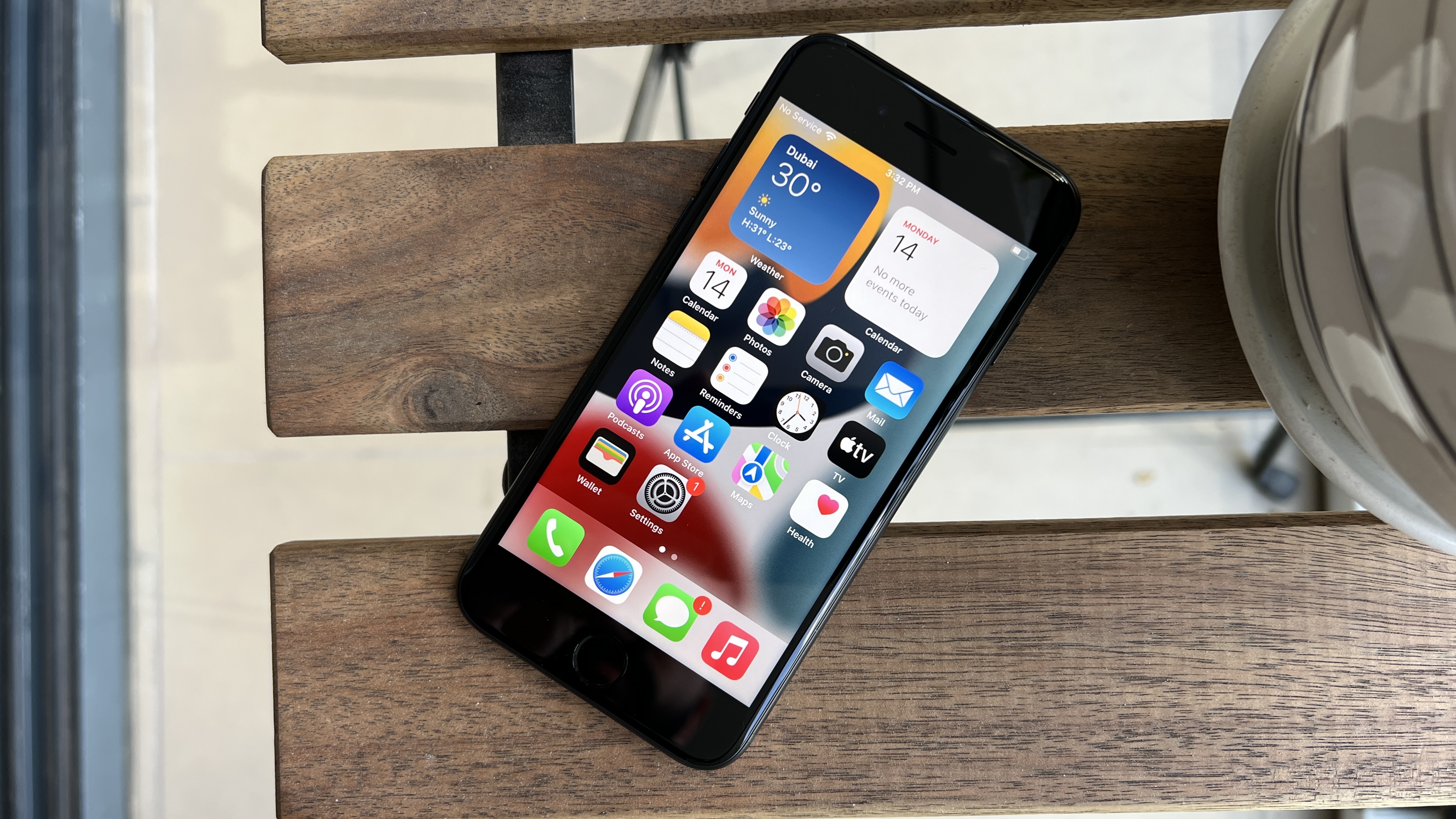
There’s a choice of either 8 or 12GB of RAM with the OnePlus, which is two or three times more than the iPhone’s 4GB. But the different ways in which iOS and Android operate render this a moot point.
Both phones offer a choice of 128GB or 256GB of storage, but the iPhone SE (2022) also throws in a 64GB option. That sounds like a win for Apple, but we’d have preferred that it started out at 128GB like the OnePlus – especially given that it’s slightly more expensive.
Another key difference lies in the respective software provisions. The iPhone SE (2022) comes with the latest version of iOS, just the same as it is on any other iPhone, while the OnePlus Nord 2 gives you Android 11 with the company’s own OxygenOS 11.3 UI. It’s in line to receive an upgrade to Android 12, too.
OnePlus’s custom UI is one of the cleaner efforts in the world of Android, so this isn’t such a clear win for Apple. Ultimately, it comes down to which OS you prefer, although Apple’s history of extended legacy support gives it the edge in a straight fight.
iPhone SE (2022) vs OnePlus Nord 2: battery
One of the biggest drawbacks of the iPhone SE (2022)’s old-fashioned design is that it comes with a relatively small 2,018mAh battery. This is bigger than its predecessor, however, and Apple’s aforementioned A15 Bionic helps it run more efficiently, too.
Of course, you also have to contend with 5G this time around, which is an infamous energy drain.
Compare that with the OnePlus Nord 2 and its way larger 4,500mAh battery. It, too, has 5G connectivity to contend with, plus that larger, more vibrant display.
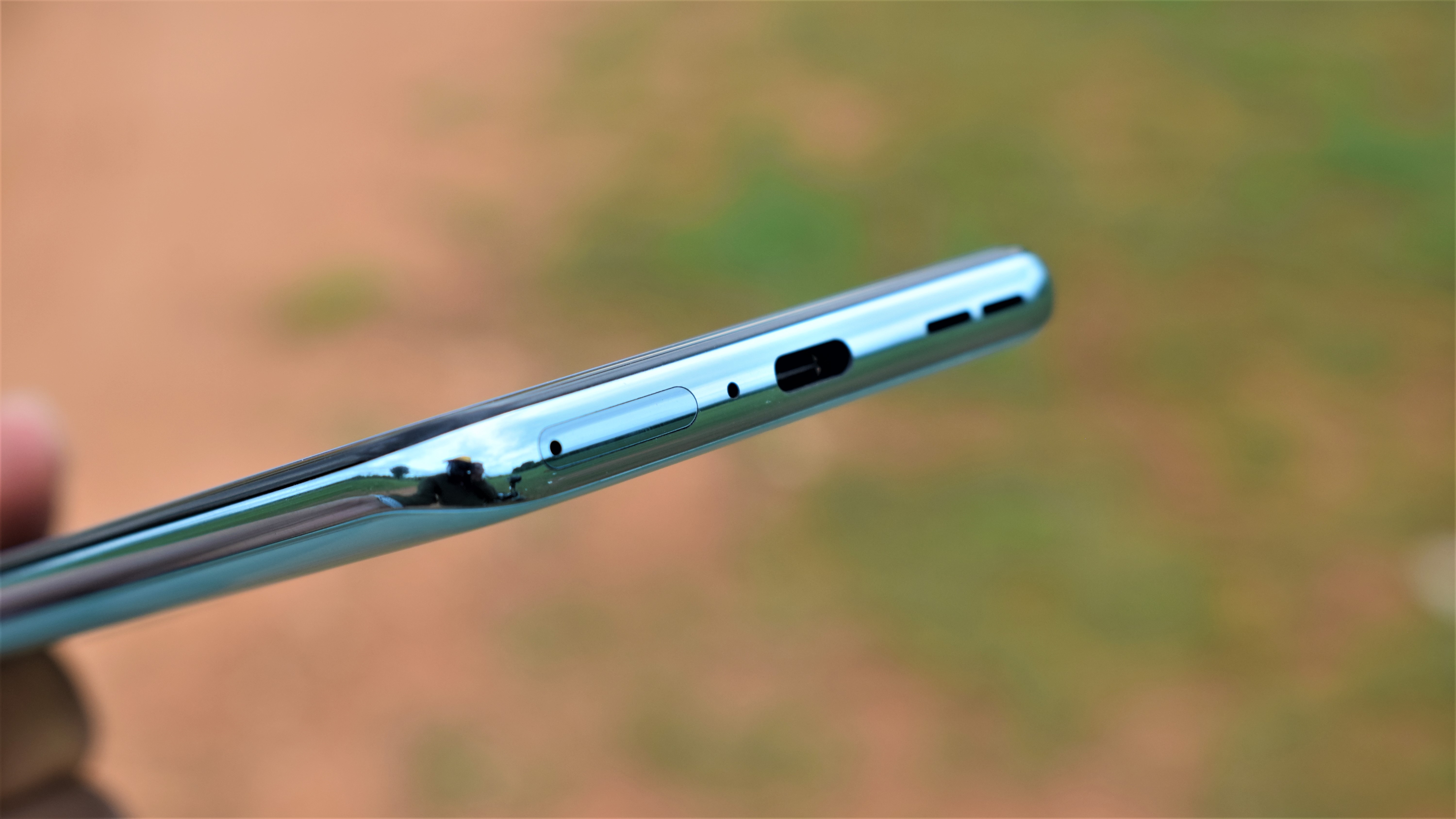
All in all, our reviewer managed to get around 12 hours of battery life in a day with the iPhone SE (2022), which isn’t quite a full day. By contrast, the OnePlus Nord 2 would get to the end of a full day with around 15% left in the tank.
Use cases vary, of course, and such a comparison isn’t an exact science; but the Nord 2 would appear to have the edge on stamina.
It also has the edge when it’s time to recharge. OnePlus has bundled in a rapid 65W charging brick, while Apple hasn’t included anything of the sort. The iPhone SE (2022) supports up to only 20W wired charging, and you’ll have to provide that yourself.
One win for the iPhone is its support for 7.5W wireless charging. The Nord 2 doesn’t support wireless charging at all.
iPhone SE (2022) vs OnePlus Nord 2: takeaway
These are two of the most appealing mid-range smartphones on the market. Both offer tidy designs, strong performance, impressive cameras, and pleasingly clean software.
However, the OnePlus Nord 2 is slightly cheaper, and it offers a far more expansive and modern smartphone experience.
The pull of Apple’s iOS ecosystem, its brand cache, and its unmatched customer support will be too much to resist for many people. However, in a straight face-off, the OnePlus Nord 2 simply offers more phone for your money right now.
Get daily insight, inspiration and deals in your inbox
Sign up for breaking news, reviews, opinion, top tech deals, and more.